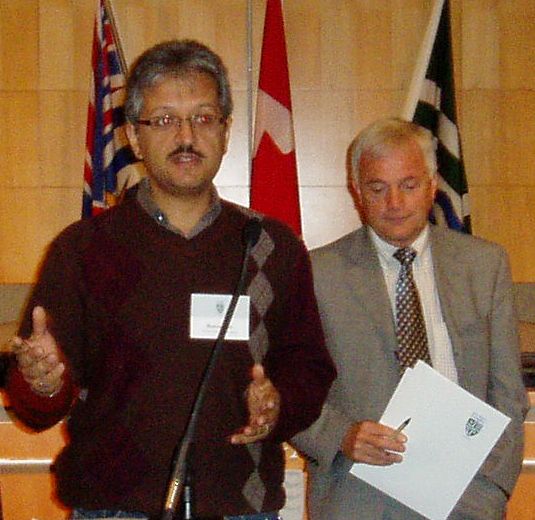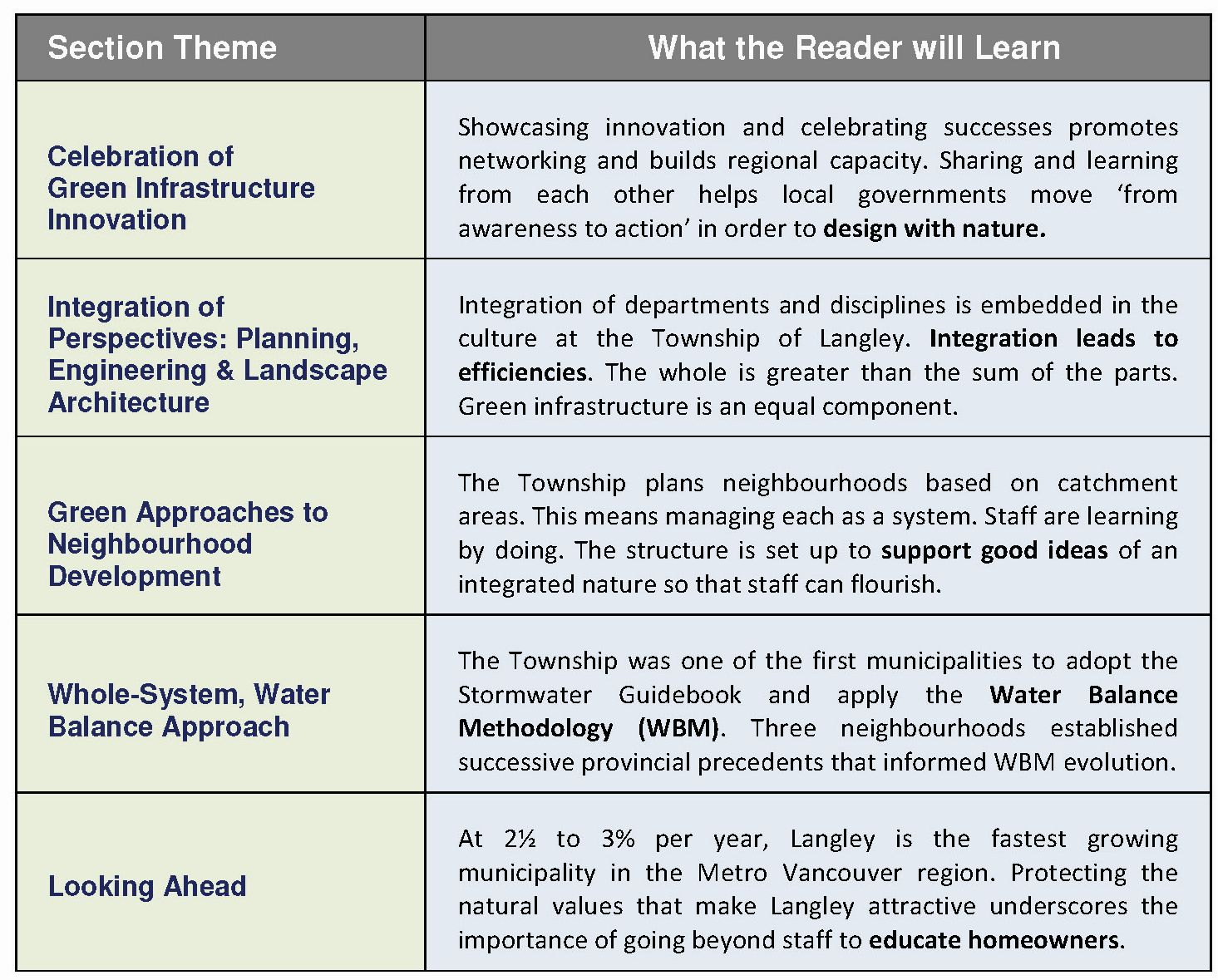CREATING THE FUTURE IN THE TOWNSHIP OF LANGLEY: “When we are in harmony with nature, things will go well,” stated Colin Wright, former General Manager of Engineering (2004-2011)
Note to Reader:
 The Langley Township story is the fifth in a series of Watershed Blueprint Case Profiles published by the Partnership for Water Sustainability.
The Langley Township story is the fifth in a series of Watershed Blueprint Case Profiles published by the Partnership for Water Sustainability.
The series showcases and celebrates successes and long-term ‘good work’ in the local government setting.
The purpose of the series is to inform and facilitate inter-regional collaboration in the Georgia Basin.
By telling the stories of those who are spearheading changes in practice, this helps other local governments eliminate the “disconnect between information and implementation” that may otherwise hold them back.
Harmony and Integration
Titled Harmony and Integration, the Langley event in October 2007 showcased what could be accomplished with large-scale projects when Council, the community and staff are in alignment and embrace a ‘green culture’.
Colin Wright (former General Manager, Engineering) and Ramin Seifi (then the Acting General Manager, Planning and Development Services) stood side-by-side to explain the significance and relevance of the Harmony and Integration theme.
When Colin Wright retired, Ramin Seifi became General Manager, Engineering and Community Development. His combined portfolio personifies integration.

Ramin Seifi (L) and Colin Wright (R) in 2007 as they co-presented at the Showcasing Green Infrastructure event hosted by the Township of Langley
How to Move from Research to Implementation
“What we are showcasing today is the outcome of years of inter-departmental collaboration,” stated Ramin Seifi in 2007. “It was not a random decision to choose Harmony and Integration as the theme for this Showcasing Innovation event. It captures our core values.”
Ramin added that he is a living example of integration because he is an engineer who heads the planning department. He then elaborated on Langley’s Sustainability Charter.
 “After many years of what you would call research, we are now in the developmental phase. Although the Sustainability Charter is high level, it will guide us in terms of providing focus and monitoring progress. Each Charter goal has a supporting set of objectives complete with specific actions,” explained Ramin Seifi.
“After many years of what you would call research, we are now in the developmental phase. Although the Sustainability Charter is high level, it will guide us in terms of providing focus and monitoring progress. Each Charter goal has a supporting set of objectives complete with specific actions,” explained Ramin Seifi.
To illustrate what this meant, he referred to the Environmental Goal and the related objectives for conserving water, reducing energy use, and improving rainwater (stormwater) runoff quality.
“We will be monitoring and measuring what matters. This will enable residents and Council to maintain their focus over time,” concluded Ramin Seifi at the 2007 event.
Design with Nature
“As municipalities, we are the focal point. We have to show leadership on-the-ground if our society is to achieve sustainability. In Langley, we believe there is a sea-change about to happen. The community is ready for green infrastructure,” stated Colin Wright in 2007.
 “When people ask what do I do, my answer is that I build cities. To do that, and do it well, we have to be in harmony with nature.
“When people ask what do I do, my answer is that I build cities. To do that, and do it well, we have to be in harmony with nature.
“When we are in harmony with nature, things will go well. This also applies to our corporate philosophy at Langley Township. We are working together and in harmony.”
To Learn More:
To read the complete story, download a copy of the Watershed Case Profile. Click on Green Infrastructure Innovation in Langley Township, released in October 2017.
The Table of Contents below is a synopsis. It distills the essence of each section into a succinct statement. These create a storyline. Readers are asked to pause and reflect on them before reading the story itself.


